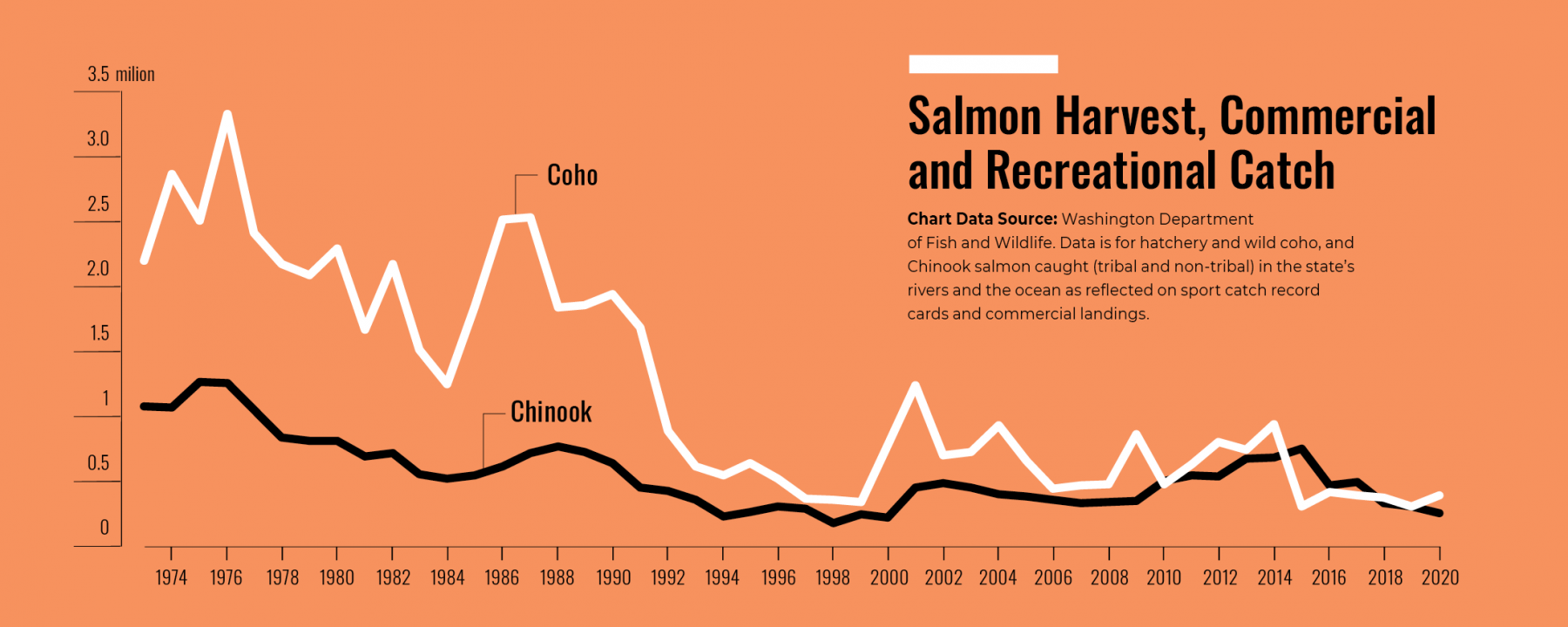PRESSURE: Overharvest
![]() Salmon harvest in many parts of Washington peaked in the late 1800s. Many populations, further depressed by habitat destruction and dam construction, were pushed to local extinction. The federal government identified persistent overfishing as one of the primary factors in the 1990s Endangered Species Act listing of many salmon and steelhead populations as threatened or endangered.
Salmon harvest in many parts of Washington peaked in the late 1800s. Many populations, further depressed by habitat destruction and dam construction, were pushed to local extinction. The federal government identified persistent overfishing as one of the primary factors in the 1990s Endangered Species Act listing of many salmon and steelhead populations as threatened or endangered.
Current harvest is co-managed by the tribes, State, and federal government through treaties, agreements, congressionally established management councils, and compacts. Harvest is highly coordinated and closely monitored and managed to protect threatened and endangered salmon. This is particularly true for Chinook, which bring high market prices for commercial fishers and are prized by recreational anglers. Chinook often are harvested in the ocean and large rivers, where differentiating between Endangered Species Act-listed fish and non-listed fish is impossible. This requires careful coordination and regulation among states, tribes, the federal government, and the Government of Canada.

PRIORITIES AND PROGRESS
![]() Effective co-management between the State and tribes has reduced harvest impacts in Washington on threatened or endangered salmon. Fishing is sustained by some healthy wild populations and many abundant hatchery-origin runs. Effectively catching hatchery fish while avoiding at-risk wild populations is a key harvest management priority.
Effective co-management between the State and tribes has reduced harvest impacts in Washington on threatened or endangered salmon. Fishing is sustained by some healthy wild populations and many abundant hatchery-origin runs. Effectively catching hatchery fish while avoiding at-risk wild populations is a key harvest management priority.
Harvest is highly coordinated and closely monitored and managed to protect threatened and endangered salmon.

Photograph of JohnYukluk, Tom Hayes, Gailan Westervelt, and Jack Giard reef net fishing for salmon off Lopez Island, courtesy of NOAA
